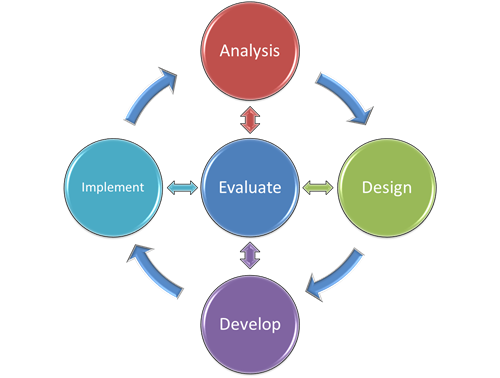26 Final Thoughts
As we conclude this eBook, I will return to the cyclical vision of the ADDIE instructional design model.

Throughout this book, we have explored the ADDIE process’s phases. I have provided background information on the importance of each phase and the theories and models that guide our decisions as instructional designers as we design, develop, test, and evaluate our ID projects. I have also contextualized all this through the practical activities I ask participants in my instructional design and educational technology courses to complete – activities that mirror my real-world experiences as an in-house and consultant instructional designer. Just because you have worked through all of these phases, completed your pilot testing, and reflected on the feedback received thus far does not mean that you are finished with your instructional design decisions. Remember, ADDIE truly is a cyclical model. You should constantly evaluate and re-evaluate your online courses to determine when and if things need to be further tweaked – or if a total redesign and redevelopment are warranted based on new “Assess” insights!
I hope that Everyday Instructional Design: A Practical Resource for Educators and Instructional Designers is a practical resource that will give you insight and guide you through your instructional design and development projects.
Now – time to revisit, re-evaluate, and perhaps do some more tweaking of my own courses!
